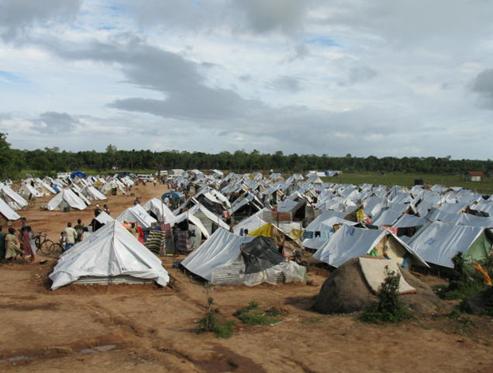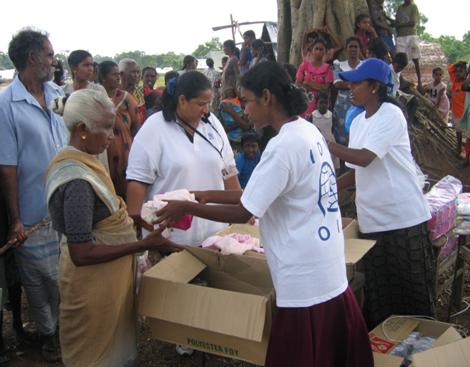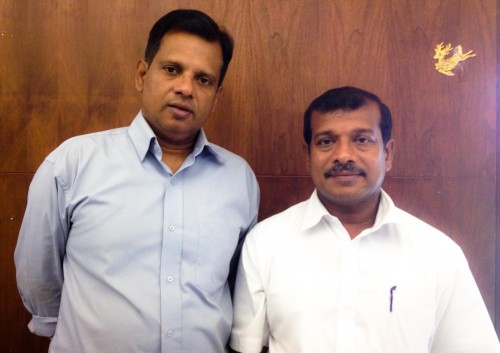24th December 2014 Colombo, Sri Lanka
Through Hell and High Water: the drivers’ story
This morning we held a short memorial in the office to remember those whose lives were taken away or damaged by the tsunami, and those who worked so tirelessly and generously to rebuild Sri Lanka. So it seems appropriate for our eighth blog to tell the stories of five long term members of British High Commission staff who were in the front line of our response.
To help someone, you have to find them, and then you have to get them what they need. Four largely unsung heroes of the first few days after the tsunami struck were the High Commission drivers and Protocol Officer.
Saman Weerasinghe, Devadas Laxman and Sunith Priyantha between them have 32 years of service with the High Commission and counting. They were the lynchpins around which rescue missions revolved, fighting their way through chaos and impassable roads. Their teams left Colombo within hours of the wave striking, before reinforcements could arrive from London.
Saman set off on 26 December to Hikkaduwa, Galle and Koggala, driving a team whose task was to assess the damage and give out supplies, and then went on to Hambantota, providing relief and even emergency mortuary assistance. Over a period of about six weeks, he spent 32 days in the field. He reminisces “There was no Galle Road. Everything was gone.”

Laxman was also deployed on 26 December, working closer to Colombo. He worked until 1.30 am, then left early the following morning for Galle. His team took provisions for themselves, but quickly gave these away, living off biscuits, apples and limited water for several days in the field. The team’s initial mandate was to scour hospitals and piles of bodies for British Nationals, but they quickly took on a much wider task, including making arrangements to transport the dead and injured of all nationalities to Colombo and distributing drinking water to any in need. He said “There were a lot of bodies; bodies everywhere. We had to bury some bodies at the Jawatte cemetery when we got back to Colombo, too.”
Eventually, Laxman’s vehicle ran out of fuel and had to be refuelled by another High Commission vehicle from Colombo. The team then went on to Hambantota and then Batticaloa. As a Tamil-speaker, he remained based in Batticoloa for several weeks, helping the Royal Air Force teams working there.
Sunith went straight to Batticoloa on the 27th. It looked like nothing he had ever seen before. “There was nowhere to stay, so we used to take helicopters out to a Royal Navy ship at night, and sleep there for a few hours.” His team worked with Royal Navy and Royal Air Force teams to help those most affected, before moving down to Hambantota later in January.

Back in Colombo, Protocol Officer Jude Baldsing, had almost moved into Katunayake airport, clearing loads of tents and other relief materials sent from the UK through customs. Some of these would have gone to Sajani Ranatunge, then working for the International Organization for Migration, but now the BHC’s Head of Programmes. Sajani was at her parents’ house in Galle when the tsunami struck. Although they were 2 km from the sea, their road was flooded, with boats and bodies left stranded a few yards from their house.
Sajani was immediately deployed to cover two large camps for the displaced in Potuvil and Ampara, in the East. “My role was to provide basic needs, prevent the spread of diseases, and protect those at risk of abuse and being trafficked, especially women and children. It was a heart wrenching experience. I remember sitting on tarpaulin, using flowers, twigs, leaves and sand as makeshift occupational therapeutic activities for children.” Sajani went on to spend the next four years managing a tsunami recovery programme.

The common thread that runs through all these stories is of human resilience, as well as a generosity that was blind to caste, creed or ethnicity when helping those in need.

Other blogs in the series:
Sad but true. thanks for sharing.
its very sad story.